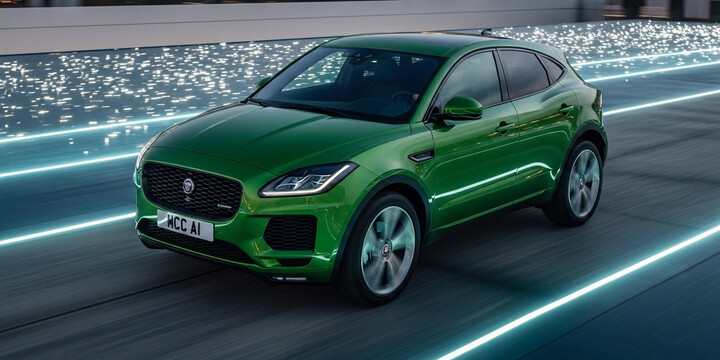
JAGUAR E-PACE (2020-24) 5DR SUV AWD 2.0I MHEV 249 GPF SS EU6 R-DYNAMIC HSE AUTO9
The JAGUAR E-PACE (2020-24) 5DR SUV AWD 2.0I MHEV 249 GPF SS EU6 R-DYNAMIC HSE AUTO9 is a stylish and versatile luxury compact SUV that stands out in the UK market. Designed for those who want a sporty yet practical vehicle, the E-PACE offers a blend of elegant exterior styling, modern features, and confident performance. It’s well-suited for families, commuters, or anyone looking for a premium driving experience with enough space for daily errands or weekend adventures. With its all-wheel-drive capability, the vehicle provides excellent handling, making it a reliable choice across various road conditions.
What makes the JAGUAR E-PACE particularly appealing is its refined design, innovative technology, and reputation for comfort and quality. This model is known for its dynamic driving experience, thanks to its efficient hybrid powertrain and smooth automatic transmission. It's an attractive option compared to rivals like the Range Rover Evoque or BMW X1, offering a distinctive premium brand appeal alongside practical features. With an average recorded mileage of around 12,841 and a typical private sale valuation of approximately £38,543, the JAGUAR E-PACE (2020-24) is a compelling choice for those seeking a stylish, versatile, and reliable compact SUV in the used car market.

average use

The recent mileage data for the Jaguar E-PACE (2020-24) R-Dynamic HSE Auto model indicates that the majority of vehicles, approximately 85.7%, have recorded mileage of 0 to 10,000 miles. A smaller portion, around 14.3%, has recorded between 10,000 and 20,000 miles. This suggests that most of these vehicles are relatively low-mileage, which could be indicative of lower usage or possibly newer, less driven vehicles in the dataset.

vehicle values

The private sale valuations for the Jaguar E-PACE (2020-24) R-Dynamic HSE model show a relatively even distribution across several price ranges. The most common price bracket is £35,000 to £36,000, accounting for 28.6% of the listings, indicating it as a typical asking price among private sellers. Other notable price segments include £30,000 to £31,000, £34,000 to £35,000, £38,000 to £39,000, £44,000 to £45,000, and £46,000 to £47,000, each representing 14.3%, suggesting these are also common but slightly less frequent. Overall, the data reveals a concentration around the mid- to high-thirties and low-forties, reflecting a broad range of private sale prices with a peak in the £35,000 to £36,000 bracket.

production years

The data indicates that among the sampled Jaguar E-PACE vehicles (2020-24), the majority—57.1%—were manufactured in 2022. Vehicles from 2021 account for 42.9%. Notably, there are no vehicles listed from 2020 or 2023-24, which could suggest that newer models are less prevalent in the sample or that earlier models have been phased out. Overall, the data emphasizes a recent production focus around 2021 and 2022.

colour popularity

The data indicates that among the Jaguar E-PACE (2020-24) R-DYNAMIC HSE models, the most common main paint colour is Red, accounting for approximately 43% of the vehicles. Silver and Blue are equally popular, each representing around 29%. This suggests a strong preference for vibrant and classic colours like Red and Silver within this model range, highlighting their popularity among buyers.

ownership cycle

The data indicates that the majority of 'JAGUAR E-PACE (2020-24) 5DR SUV AWD 2.0I MHEV 249 GPF SS EU6 R-DYNAMIC HSE AUTO9' vehicles have had only one registered keeper, accounting for 57.1%. Meanwhile, 42.9% of these vehicles have had two registered keepers. This suggests that most owners tend to retain the vehicle for a significant period before changing hands, with relatively few vehicles experiencing multiple ownership changes.

engine choices

Based on the available data for the 2020-24 Jaguar E-PACE 5DR SUV AWD 2.0I MHEV 249 GPF SS EU6 R-DYNAMIC HSE AUTO9 model, it is evident that all vehicles in this sample are equipped with a 1.997-liter engine, indicating uniformity in engine capacity. Additionally, 100% of these vehicles use petrol as their primary fuel type. This suggests that the model is consistently configured with the petrol engine option, which may be indicative of the vehicle's market positioning or manufacturing specifications during this period.












